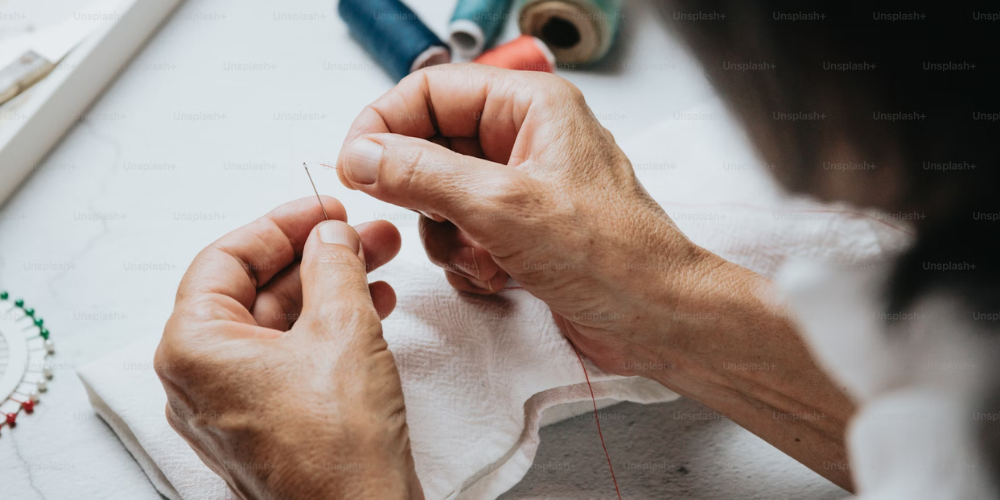Introduction to Knitting Stitches
Knitting is an art form that involves creating fabric by interlocking loops of yarn. Understanding different types of knitting stitches is essential for mastering this craft. Whether you’re a beginner or an experienced knitter, knowing various stitches opens up a world of creative possibilities.
Before diving into the intricacies of different stitches, it’s important to gather the basic tools required for knitting. These include yarn, knitting needles, scissors, stitch markers, and a tapestry needle.

Understanding Knit and Purl Stitches
At the core of knitting are two fundamental stitches: the knit stitch and the purl stitch. Knit stitches create a smooth, v-shaped pattern, while purl stitches form a textured, bumpy surface. Mastering these two stitches lays the foundation for more complex knitting patterns.
Garter Stitch
The garter stitch is one of the simplest and most commonly used knitting stitches. It creates a fabric with ridges on both sides and is achieved by knitting every row. Garter stitch is perfect for beginner projects such as scarves, blankets, and dishcloths.
To knit the garter stitch, simply knit every stitch in every row, without alternating between knit and purl stitches.
Stockinette Stitch
The stockinette stitch is another basic knitting stitch that creates a smooth, flat fabric with distinct right and wrong sides. It is achieved by knitting one row and purling the next row. Stockinette stitch is commonly used in garments like sweaters, hats, and socks.
To knit the stockinette stitch, knit one row and then purl the next row, repeating this pattern until the desired length is achieved.
Ribbing Stitch
Ribbing stitch creates a stretchy, elastic fabric that is often used for cuffs, collars, and edges of garments. It is achieved by alternating knit and purl stitches in the same row. Ribbing adds texture and visual interest to knitted pieces.
To knit the ribbing stitch, alternate between knit and purl stitches in the same row, repeating this pattern until the desired length is achieved.
Seed Stitch
The seed stitch, also known as moss stitch, creates a fabric with a raised, pebbled texture. It is achieved by alternating knit and purl stitches within the same row and across subsequent rows. Seed stitch is versatile and can be used for a variety of projects, including scarves, hats, and baby blankets.
To knit the seed stitch, alternate between knit and purl stitches within the same row, and repeat this pattern across subsequent rows.
Cable Stitch
Cable stitch creates intricate, woven patterns that resemble twisted ropes or braids. It involves crossing stitches over each other to create the appearance of cables. Cable knitting requires the use of a cable needle and is commonly used in sweaters, blankets, and accessories.
To knit the cable stitch, follow a cable pattern that specifies the order and direction of the cable crosses.
Lace Stitch
Lace stitch creates delicate, openwork patterns that resemble lace fabric. It involves a combination of yarn overs and decreases to create intricate designs. Lace knitting requires careful attention to detail and is often used in shawls, scarves, and decorative edging.
To knit the lace stitch, follow a lace pattern that specifies the placement of yarn overs and decreases.
Bobble Stitch
Bobble stitch creates small, raised bumps or balls on the surface of the fabric. It adds texture and dimension to knitted pieces and is often used as an embellishment or decorative element. Bobble knitting requires increasing and decreasing stitches to create the rounded shape of the bobbles.
To knit the bobble stitch, follow a bobble pattern that specifies the number of stitches to increase and decrease.
Moss Stitch
Moss stitch, also known as seed stitch, creates a fabric with a raised, textured surface. It is achieved by alternating knit and purl stitches within the same row and across subsequent rows. Moss stitch is versatile and can be used for a variety of projects, including scarves, hats, and blankets.
To knit the moss stitch, alternate between knit and purl stitches within the same row, and repeat this pattern across subsequent rows.
Basketweave Stitch
Basketweave stitch creates a fabric with a woven, basket-like texture. It is achieved by alternating blocks of knit and purl stitches to create the appearance of woven strips. Basketweave stitch is often used for blankets, scarves, and washcloths.
To knit the basketweave stitch, follow a basketweave pattern that specifies the size and arrangement of the knit and purl blocks.
Conclusion
Exploring different types of knitting stitches opens up a world of creative possibilities for beginners. By mastering basic stitches like knit and purl, and experimenting with more complex stitches like cables and lace, knitters can create beautiful and unique projects. Don’t be afraid to try new techniques and challenge yourself with different stitch patterns.
FAQs
- What are the easiest knitting stitches for beginners?
- Garter stitch and stockinette stitch are among the easiest knitting stitches for beginners to learn.
- How can I fix mistakes in my knitting stitches?
- Mistakes in knitting stitches can often be fixed by carefully unraveling the stitches and reknitting them correctly.
- Can I use different types of yarn for different stitches?
- Yes, different types of yarn can be used for different knitting stitches, depending on the desired texture and appearance of the fabric.
- Are there any online tutorials for learning knitting stitches?
- Yes, there are numerous online tutorials and instructional videos available for learning various knitting stitches.
- What are some common mistakes beginners make when learning knitting stitches?
- Common mistakes include dropping stitches, knitting too tightly, and not counting stitches accurately.
